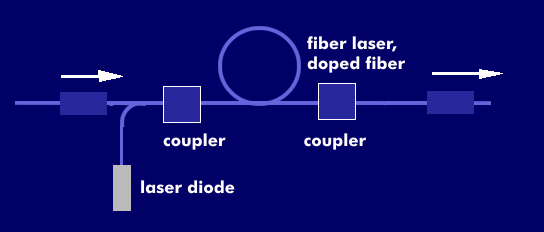fiber amplifier
Fiber amplifiers, fiber amplifiers, are optical amplifiers that use fiber lasers to produce light amplification. The critical component of fiber amplifiers is the fiber laser. This is a glass fiber whose core glass is doped with rare earths such as erbium, ytterbium, neodymium, praseodymium or thulium. They are excited by pump lasers and use the pump energy to amplify light.
The doping chemical element determines the wavelength of light emission, which for all rare earths is in the infrared range. Depending on the doping, the fiber amplifiers are called erbium doped fiber amplifier( EDFA), praseodymium doped fiber amplifier ( PDFA), thulium doped fiber amplifier( TDFA), ytterbium doped fiber amplifier (YDFA), and erbium ytterbium doped fiber amplifier( EYDFA).
The defining component of a fiber amplifier is the fiber laser. The light source to be amplified and a pump laser, which is a high- power laser diode, are connected to it via a filter or coupler. The coupler element can be a dichroic filter or a Bragg grating. The pump laser has a wavelength of 980 nm. The energy of the pump laser provides the amplification of the light signal, which is coupled out via another coupler element.

